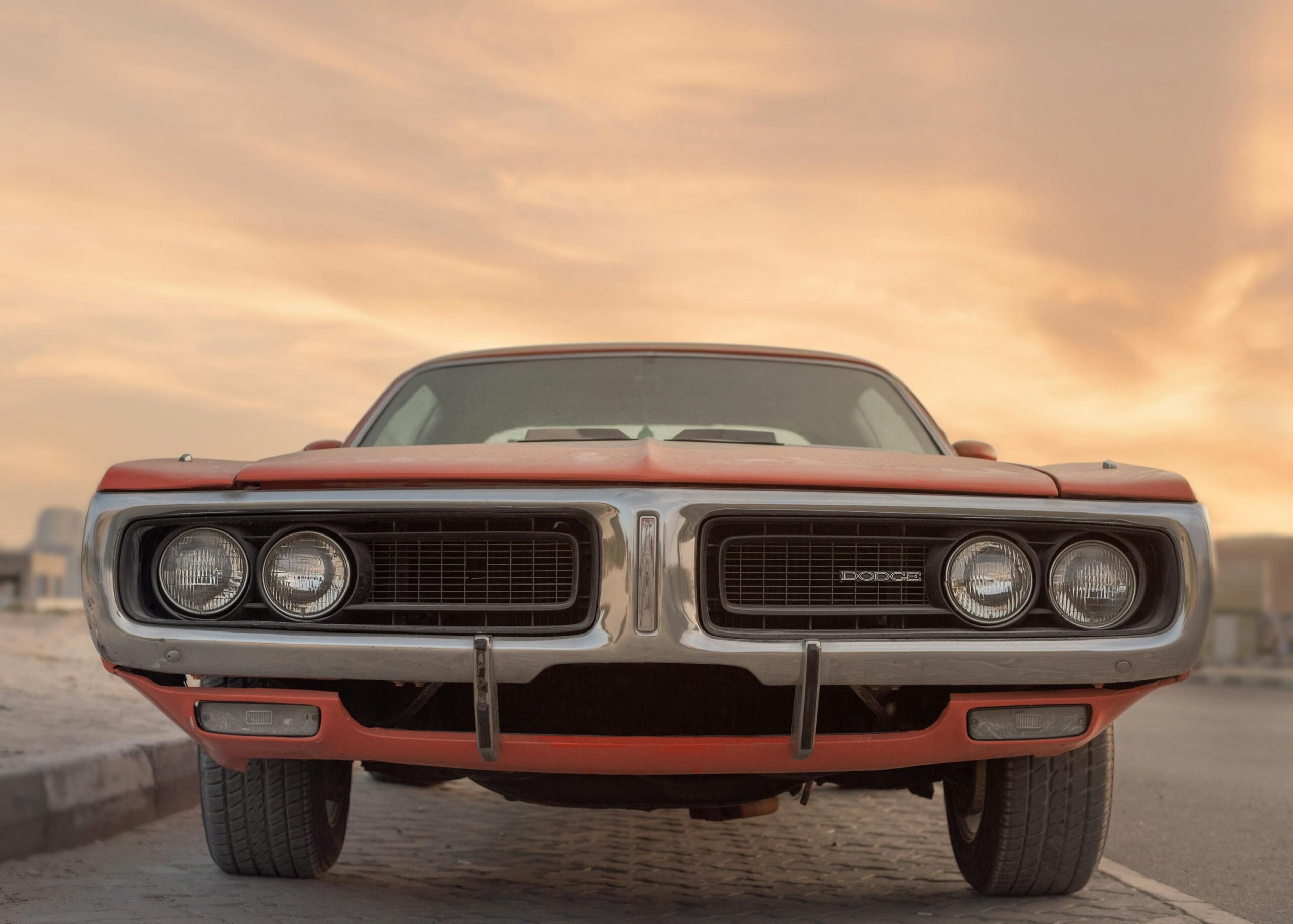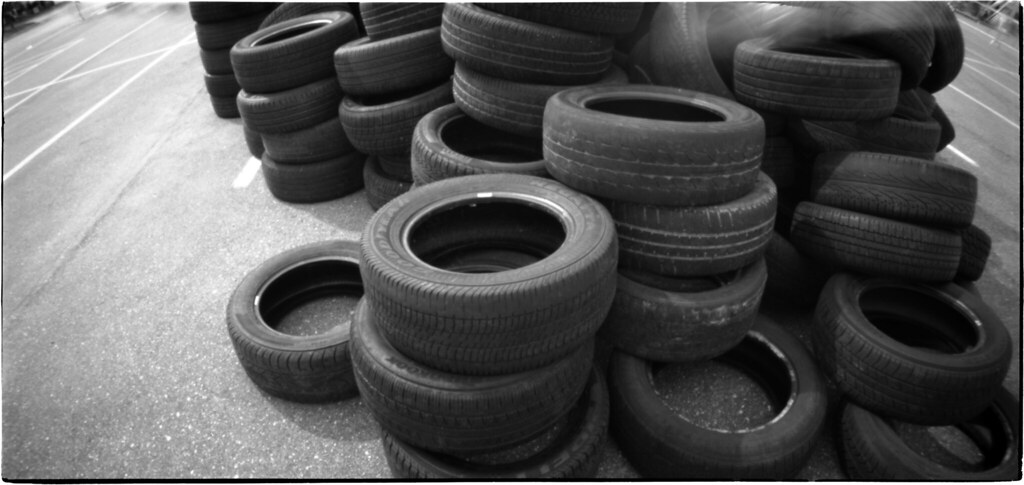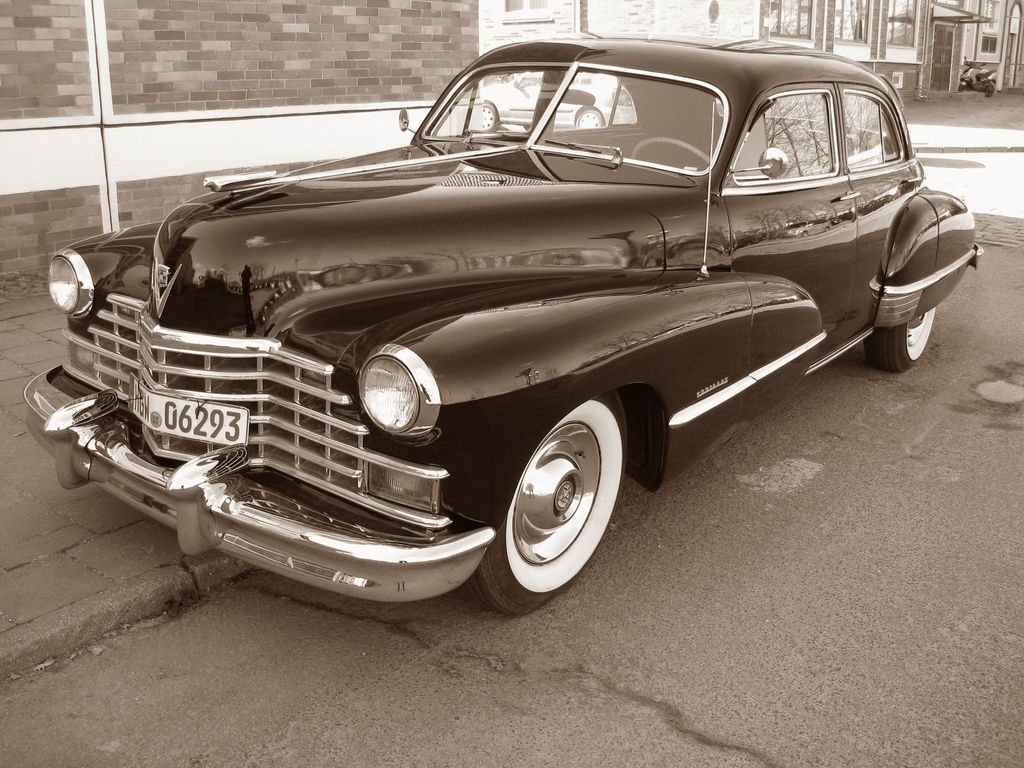
Alright, gearheads, let’s cut through the rose-tinted nostalgia for a minute. We all love a classic car, right? That visceral connection, the smell of old leather and gasoline, the raw, unfiltered driving experience. For decades, these beautiful machines haven’t just been objects of passion and history; they’ve often been seen as iron-clad investments, some fetching millions at auction. But here’s the cold, hard truth that might just make a few of you wince: not every vintage beauty is a smart buy. In fact, some once-iconic vehicles have seen their worth plummet, making them, shall we say, less than stellar investments today.
We’re not here to pour cold water on your dreams of a garage full of appreciating assets. Far from it. This is about separating the wheat from the chaff, the true automotive legends from those that, for various reasons, just didn’t hold up. Whether it’s poor reliability, outrageous upkeep, or simply a market that moved on, not all collector favorites live up to the hype. In the world of classic cars, where passion often dictates price, there are a surprising number of machines that, despite their initial fanfare or a moment in the sun, are now worth considerably less than their original aspirations or even their once-modest market values.
So, buckle up, because we’re taking a deep dive into the fascinating, sometimes frustrating, world of classic car depreciation. We’re popping the hood on some of these forgotten gems and automotive missteps, exploring why certain models have fallen out of favor with collectors and enthusiasts alike. Prepare to rethink some of your childhood dream cars, because we’re about to explore the first half of a list of classics that experts and collectors say just aren’t worth the cost anymore.
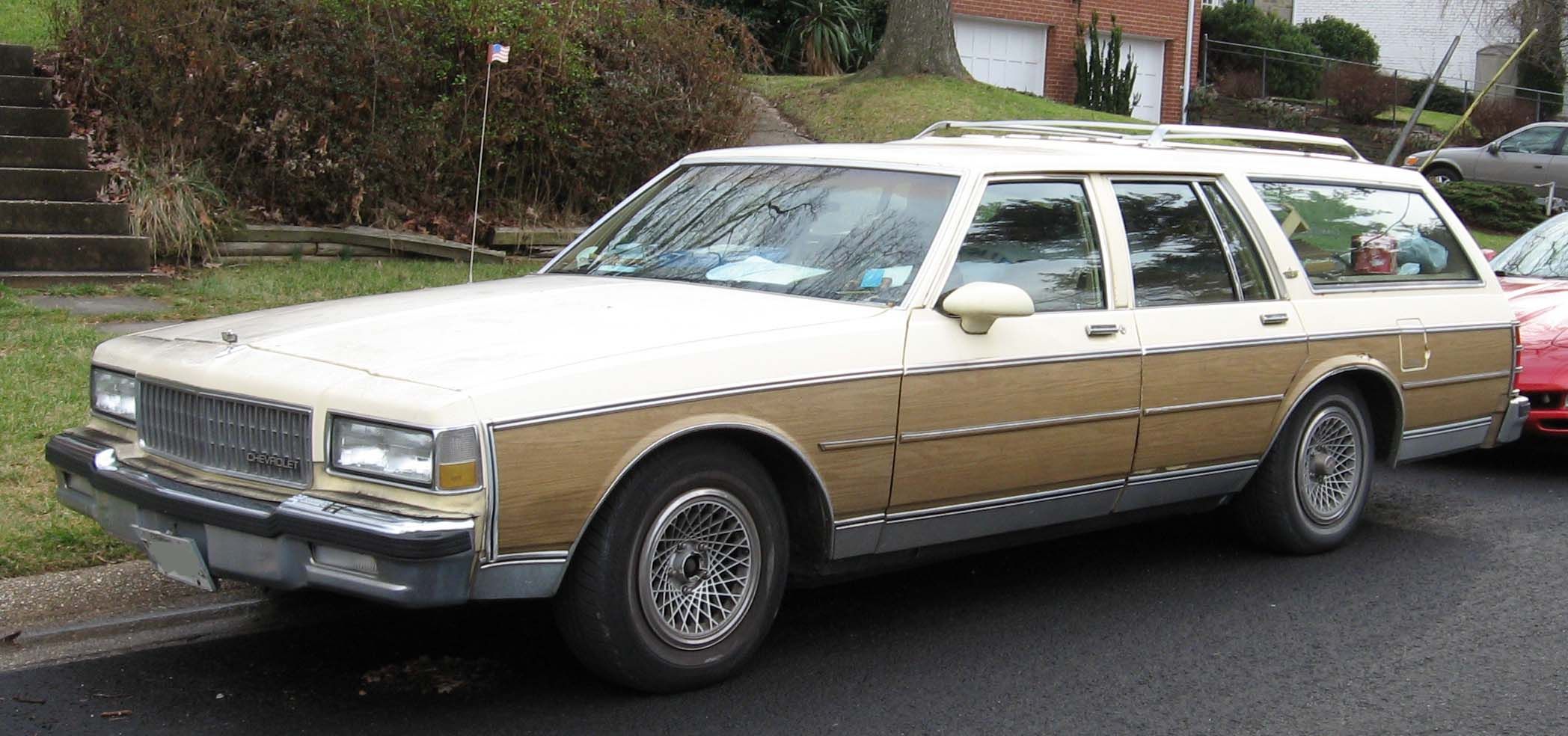
1. **Chevrolet Caprice** The Chevrolet Caprice. Ah, the very name conjures images of broad-shouldered American sedans cruising down boulevards in the mid-1960s. When it first hit the roads, this full-size sedan was Chevrolet’s flagship, attracting potential buyers with its generous space, luxurious comfort, and a choice of robust engines that promised effortless American motoring. It was, for a time, the epitome of what many desired in a family car, a symbol of post-war prosperity and spacious living.
However, the good times for the bulky Caprice were, unfortunately, short-lived. Not long after its 1965 debut, the automotive landscape began to shift dramatically. The demand for large, gas-guzzling sedans, once the pride of the American road, started to vanish faster than a drag race winner. Fuel crises, changing environmental consciousness, and a burgeoning interest in more nimble, fuel-efficient alternatives meant the Caprice quickly became dated, an relic of a rapidly fading era.
Buyers, once enamored by its sheer size and opulent comfort, began flocking to smaller, more practical, and less thirsty vehicles. This seismic shift in buyer preferences sealed the Caprice’s fate in the collector market. As a result, the Caprice’s value has dropped considerably over the decades and, despite its historical significance, has never truly returned to its former glory. It remains a classic, certainly, but one that many enthusiasts can pick up for a song, far less than its initial grandeur might suggest.
Car Model Information: 1994 Chevrolet Caprice Classic
Name: Chevrolet Caprice
Caption: Chevrolet Caprice PPV
Manufacturer: unbulleted list
Production: unbulleted list
ModelYears: unbulleted list
Predecessor: unbulleted list
Class: Full-size car
Platform: unbulleted list
Layout: FR layout
Categories: 1970s cars, 1980s cars, 1990s cars, 2000s cars, 2010s cars
Summary: The Chevrolet Caprice is a full-size car produced by Chevrolet in North America for the 1965 through 1996 model years. Full-size Chevrolet sales peaked in 1965, with over a million units sold. It was the most popular car in the U.S. in the 1960s and early 1970s, which, during its production, included the Biscayne, Bel Air, and Impala.
Introduced in mid-1965 as a luxury trim package for the Impala four-door hardtop, Chevrolet offered a full line of Caprice models for the 1966 and subsequent model years, including a “formal hardtop” coupe and an Estate station wagon. The 1971 through 1976 models are the largest Chevrolets built. The downsized 1977 and restyled 1991 models were awarded Motor Trend Car of the Year. Production ended in 1996.
From 2011 until 2017, the Caprice nameplate returned to North America as a full-size, rear wheel drive police vehicle, a captive import from Australia, built by General Motors’s subsidiary Holden. The police vehicle is a rebadged version of the Holden WM/WN Caprice. The nameplate also had a civilian and police presence in the Middle East from 1999 until 2017, where the imported Holden Statesman/Caprice built by Holden was marketed as the Chevrolet Caprice in markets such as Saudi Arabia and the UAE.
Get more information about: Chevrolet Caprice
Buying a high-performing used car >>>
Brand: Chevrolet Model: Caprice
Price: $275,000 Mileage: 950 mi.
Read more about: 12 Roaring Muscle Car Memories That Will Burn Rubber in Your Brain Forever
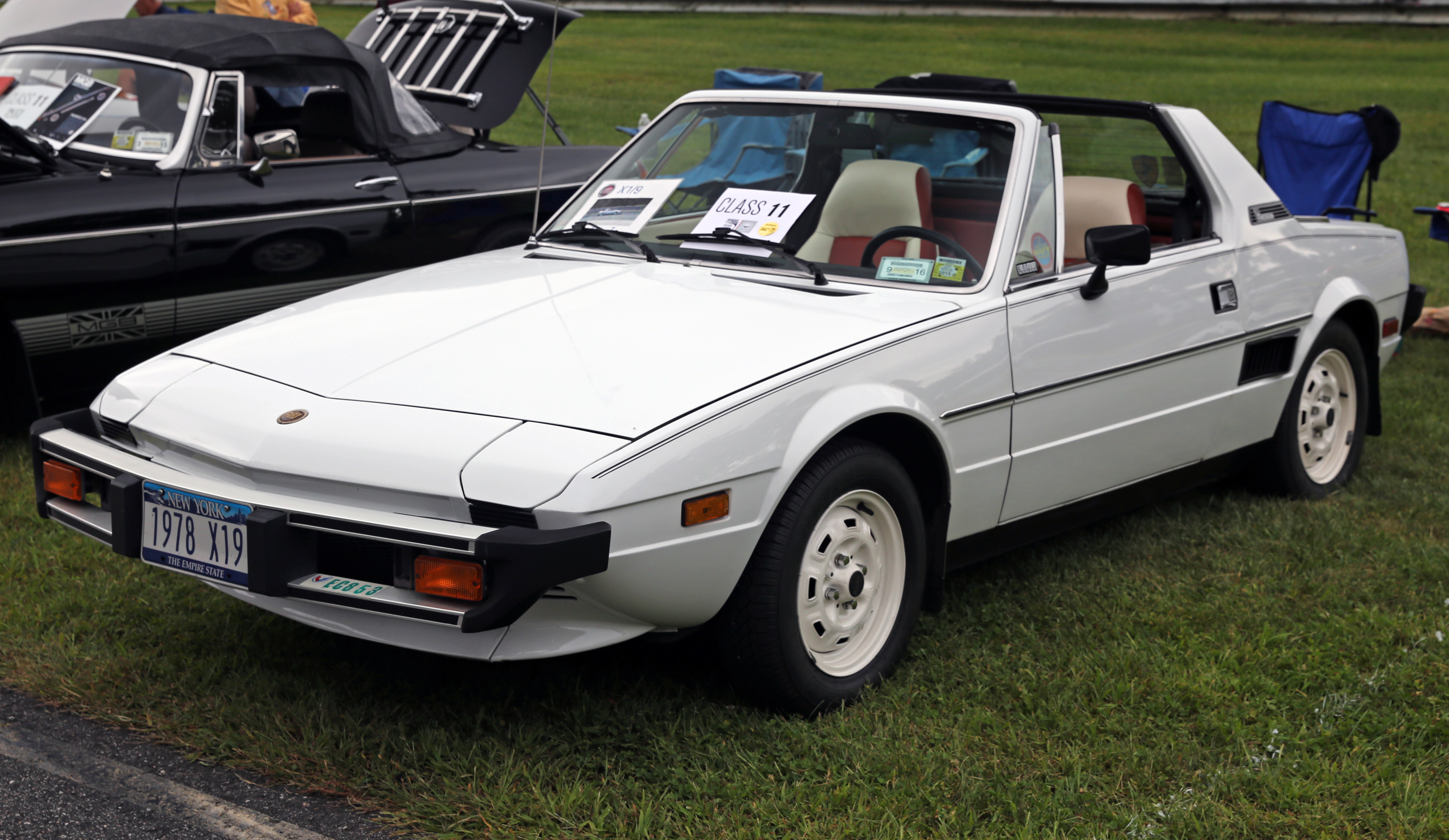
2. **Fiat X1/9** Now, let’s pivot to something a little more exotic, albeit with its own set of value challenges: the Fiat X1/9. This two-seater sports car, which debuted in 1972, was a truly distinctive machine. Designed by the legendary Bertone, it boasted a mid-engine layout, an almost wedge-shaped profile, and a removable targa-style top that offered a thrilling open-top driving experience combined with genuine sports car fun. It was a stylish, lightweight, and surprisingly agile little car, promising Italian flair on a more accessible budget.
Yet, despite its charming design and spirited character, the Fiat X1/9 has experienced significant depreciation over the years. This decline in value can be attributed to several factors that often plague older European sports cars. Foremost among them are reliability issues that, let’s be honest, were a hallmark of many vehicles from that era, and particularly of Italian origin. Owners frequently grappled with electrical gremlins and mechanical quirks that required patience and a healthy mechanic’s budget.
Furthermore, finding parts for these aging machines has become increasingly difficult, a common plight for niche European imports. The declining demand for older, small-displacement European sports cars, as tastes shifted towards more powerful or technologically advanced alternatives, also played a significant role. However, this depreciation has inadvertently made the X1/9 an affordable entry point for enthusiasts seeking a unique, quirky classic. Its distinctive mid-engine layout and charming design still appeal to those looking for a distinctive and engaging driving experience, even if the resale value isn’t its strong suit.
Car Model Information: 1978 FIAT X1/9 Base
Name: Fiat X1/9
Manufacturer: Fiat
Aka: Bertone X1/9
Production: [object Object]
Assembly: Fiat,Gruppo Bertone
Designer: Marcello Gandini
Class: Sports car
BodyStyle: Targa top
Layout: Rear mid-engine, rear-wheel-drive layout
Related: Fiat 128,Fiat Ritmo
Engine: Fiat 128 SOHC engine,Fiat 128 SOHC engine
Transmission: Manual transmission
Wheelbase: cvt
Length: cvt
Width: cvt
Height: cvt
Weight: cvt
Predecessor: Fiat 850,Vignale Gamine
Successor: Fiat Barchetta
Sp: uk
Categories: 1980s cars, Articles with short description, Bertone vehicles, CS1 Italian-language sources (it), Cars introduced in 1972
Summary: The Fiat X1/9 is an Italian two-seater mid-engined sports car designed by Bertone and manufactured by Fiat from 1972–1982 and subsequently by Gruppo Bertone from 1982–1989.
With a transverse engine and gearbox in a mid-mounted, rear-wheel drive configuration, the X1/9 was noted for its balanced handling, retractable headlights, lightweight removable hardtop which could be stowed under the bonnet, front and rear storage compartments — and for being the first Fiat to have been designed from its conception to meet US safety regulations.
Get more information about: Fiat X1/9
Buying a high-performing used car >>>
Brand: Fiat Model: X1/9
Price: $6,995 Mileage: 42,783 mi.
Read more about: Beyond the Big Three: 15 Forgotten Car Brands from the ’60s and ’70s That Deserve Another Look

3. **1964 Mercury Marauder** Back across the pond, the 1964 Mercury Marauder presented a different kind of conundrum in the classic car market. This was a full-size, performance-oriented car introduced by Mercury, Ford’s luxury subdivision, aimed squarely at providing a potent mix of style, comfort, and undeniable power. It was a car that whispered “executive muscle,” designed to offer a more sophisticated take on the performance car trend gripping America.
Despite a relatively low production run, which would typically suggest exclusivity and potential appreciation, Marauders quickly plummeted in value just years after the model’s initial release. This rapid decline can be attributed to a confluence of market forces that reshaped buyer preferences. The ongoing shift towards smaller, more fuel-efficient vehicles, spurred by emerging environmental concerns and the eventual fuel crises, made large, powerful coupes like the Marauder seem increasingly out of step.
Compounding this issue was the increased availability of even more powerful and overtly muscular cars from rivaling automakers. The market became saturated with high-horsepower options, often at more competitive prices or with more aggressive styling. As a result, the 1960s Marauder, despite its unique blend of luxury and performance, can often be found at relatively affordable prices today compared to its original value, making it a budget-friendly way to own a distinct piece of American automotive history, if you’re not looking for an investment.
Car Model Information: 2004 Mercury Marauder
Name: Mercury Marauder
Caption: 2003–2004 Mercury Marauder
Manufacturer: Mercury (automobile)
Production: 1963–1965,1969–1970,2002–2004
ModelYears: 1963–1965,1969–1970,2003–2004
Class: Full-size
Layout: FR layout
Categories: 1960s cars, 1970s cars, All articles with dead external links, Articles with dead external links from January 2018, Articles with permanently dead external links
Summary: The Mercury Marauder is an automobile nameplate that was used for three distinct full-size cars produced by the Mercury division of Ford Motor Company. Deriving its name from the most powerful engines available to the Mercury line, the Marauder was marketed as the highest-performance version of the full-size product range.
Introduced as a 19631⁄2 model line for its first production run, the Mercury Marauder was distinguished by its sloped roofline (shared with the Ford Galaxie). The nameplate was a sub-model of the three Mercury model lines (Monterey, Monterey Custom, and S-55).
For the 1966 model year, the Marauder was replaced by the S-55 as a stand-alone model line, making it the Mercury counterpart of the Ford Galaxie 500 XL version.
The Marauder model name returned as a fastback-like version of the Mercury Marquis for the 1969 model year. It was positioned as a personal luxury car between the Mercury Cougar and Continental Mark III. Following the 1970 model year, the Marauder model was discontinued.
The Mercury Marauder nameplate was revived for the 2003 model year as a high-performance variant of the full-size Grand Marquis using the Ford Panther platform. After lower-than-expected sales, the Marauder was discontinued at the end of the 2004 model year. The Mercury Marauder became the last rear-wheel drive sedan introduced by Ford Motor Company in North America.
Get more information about: Mercury Marauder
Buying a high-performing used car >>>
Brand: Mercury Model: Marauder
Price: $27,000 Mileage: 107,322 mi.
Read more about: Unleashing the Beasts of ’62: A Deep Dive into 8 Legendary American Muscle Car Grandfathers

4. **Dodge Charger (Later Generations)** When you hear “Dodge Charger,” your mind likely jumps to the iconic, earth-shaking muscle cars of the late 1960s, a true pillar of American automotive might. There’s no denying that the original Dodge Charger is easily one of the most significant muscle cars in the world, a legend forged in Hollywood chases and drag strip glory. But here’s the kicker: not all Chargers were created equal, especially when it comes to long-term value.
Believe it or not, some variants of this automotive icon are nowhere near as valuable as the rarest trim levels, particularly those from later generations. Specifically, models from the early 1970s, which often had higher production numbers or were powered by weaker, emissions-choked engines, have experienced rapid depreciation. These were the years when new regulations began to stifle horsepower, and the raw, untamed power that defined the muscle car era started to wane.
The earlier, pristine examples with their massive big-block V8s continue to command serious money, but those slightly later iterations just don’t hold their value anywhere near as well as their older counterparts. For enthusiasts looking to get into a Charger without breaking the bank, these often overlooked early 1970s models offer a taste of that muscle car heritage, albeit with a smaller impact on both your wallet and your spine. It’s a prime example of how even a legendary nameplate can have its less-appreciated chapters.
Car Model Information: 2022 Dodge Charger SXT
Name: Dodge Charger
Caption: 1969 Dodge Charger
Manufacturer: Dodge
Production: 1966–1978,1981–1987,2005–present
ModelYears: 1966–1978,1982–1987,2006–present
Categories: 1960s cars, 1970s cars, 1980s cars, 2000s cars, 2010s cars
Summary: The Dodge Charger is a model of automobile marketed by Dodge in various forms over eight generations since 1966.
The first Charger was a show car in 1964. A 1965 Charger II concept car resembled the 1966 production version.
In the United States, the Charger nameplate has been used on mid-size cars, personal luxury coupes, subcompact hatchbacks, and full-size sedans.
Get more information about: Dodge Charger
Buying a high-performing used car >>>
Brand: Dodge Model: Charger
Price: $20,899 Mileage: 37,151 mi.
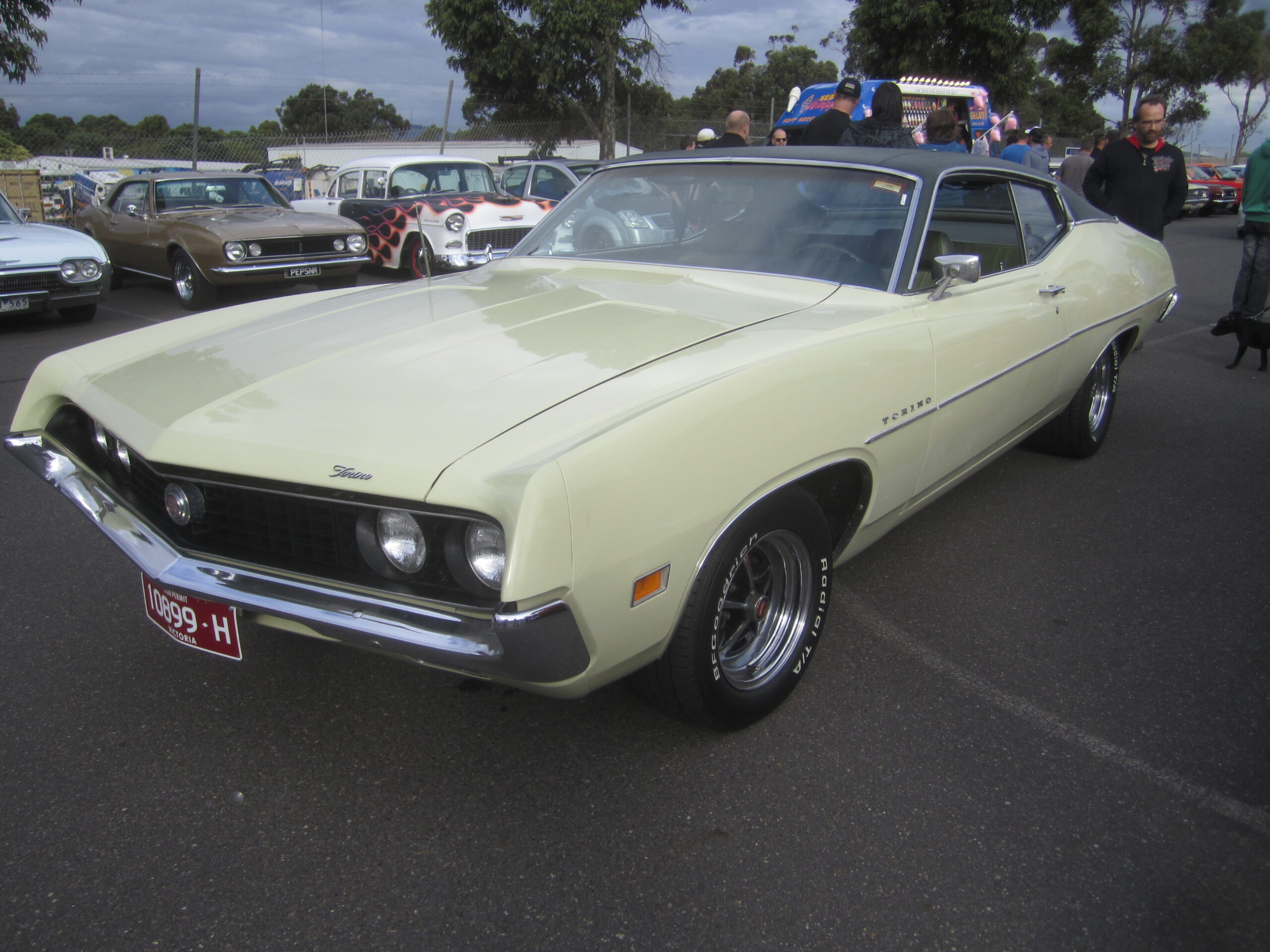
5. **Ford Torino** The Ford Torino is another name that resonates with racing enthusiasts, primarily thanks to its success in NASCAR in the late 1960s. The iconic Torino Talladega, a race car based on Ford’s flagship midsize offering, was a force to be reckoned with on the track, cementing the Torino’s reputation for speed and performance. It was a true hero of the oval, and its street-legal brethren carried that reputation with pride, at least for a while.
However, that formidable racing heritage was, unfortunately, not enough for the Ford Torino to hold its value over the long haul. Like many of its contemporaries, the Torino fell victim to a changing market, one where rising fuel costs and shifting consumer preferences began to penalize large, performance-oriented coupes. The public’s appetite moved away from the very characteristics that made the Torino a track legend.
The introduction of newer, more technologically advanced vehicles that eventually outperformed the once-unbeatable Ford Torino further contributed to its decline in market value. Today, this vehicle, once a symbol of Ford’s racing prowess, is often considered a great entry-level classic car for petrol heads on a tighter budget. It allows enthusiasts to own a piece of that glorious racing past without the prohibitively high price tag associated with other race-bred classics.
Car Model Information: 1974 Ford Torino
Aka: Ford Fairlane (Venezuela)
Name: Ford Torino
Caption: 1970 Ford Torino Cobra SportsRoof
Manufacturer: Ford Motor Company
Production: 1968–1976
Class: Mid-size car,muscle car
Layout: FR layout
Related: Mercury Montego
Assembly: ubl
Predecessor: Ford Fairlane (Americas)
Successor: Ford LTD II
Categories: 1960s cars, 1970s cars, All Wikipedia articles written in American English, All articles with vague or ambiguous time, Articles with short description
Summary: The Ford Torino is an automobile that was produced by Ford for the North American market between 1968 and 1976. It was a competitor in the intermediate market segment and essentially a twin to the Mercury Montego line.
Just as the Ford LTD had been the upscale version of the Ford Galaxie, the Torino was initially an upscale variation of the intermediate-sized Ford Fairlane. In the 1968 and 1969 model years, the intermediate Ford line consisted of lower-trim Fairlanes and its subseries, the upper-trim Torino models. In 1970, Torino became the primary name for Ford’s intermediate, and the Fairlane was now a subseries of the Torino. In 1971, the Fairlane name was dropped altogether, and all Ford intermediates were called Torino.
Most Torinos were conventional cars, and generally the most popular models were the four-door sedans and two-door hardtops. However, Ford produced some high-performance “muscle car” versions of the Torino by fitting them with large powerful engines, such as the 428 cu in (7.0 L) and 429 cu in (7.0 L) “Cobra-Jet” engines. Ford also chose the Torino as the base for its NASCAR entrants, and it has a successful racing heritage.
Get more information about: Ford Torino
Buying a high-performing used car >>>
Brand: Ford Model: Torino
Price: $34,999 Mileage: 112,114 mi.
Read more about: Unleashing the Roar: 14 Iconic Muscle Cars from the 1970s That Defined an Era of Power and Style for Enthusiasts

6. **Chevrolet Corvette C3 (1980s)** Ah, the Corvette. America’s first true sports car, an icon in every sense of the word. The third generation, the C3, enjoyed a remarkably long production run, spanning from the second half of the 1960s well into the early 1980s. When it first launched, the C3 was a thoroughly modern machine, with its distinctive ‘coke bottle’ styling and potent engine options. For a decade, it captured the hearts of drivers looking for American-made performance and style.
But time, as they say, marches on, and the C3, despite its initial success, struggled to keep pace with the rapidly changing market over its extended lifespan. By the early 1980s, the C3 was already showing its age, a stark contrast to the rapidly evolving designs and technologies from European and Japanese rivals. The stringent emissions regulations of the era hit the C3 particularly hard, choking its once-mighty V8 engines.
For example, in the early 1980s, GM was offering the C3 with the L-48 V8 engine that made a paltry 180 horsepower, a far cry from the roaring big-block variants from a decade earlier. This significant drop in performance, combined with an increasingly dated design and interior, made the late-production C3 Corvette among the cheapest legendary classic cars money can buy today. While earlier, more powerful C3s still command respect, these later models serve as a reminder that even icons can stumble in the face of changing times and regulations.
Car Model Information: 2022 Nissan Rogue SV
Name: Chevrolet Corvette (C3)
Caption: 1973 Chevrolet Corvette Stingray
Manufacturer: Chevrolet
Aka: Chevrolet Corvette Stingray,(1968–76)
Production: August 1967 – October 1982
ModelYears: 1968–82
Platform: General Motors Z platform
Assembly: St. Louis Truck Assembly,Bowling Green Assembly Plant
Predecessor: Chevrolet Corvette (C2)
Successor: Chevrolet Corvette (C4)
Class: Sports car
BodyStyle: Convertible (car),coupé
Layout: Mid-engine design
Engine: {{cvt,305,cuin,L,1,Chevrolet small-block engine (first- and second-generation)#LG4,V8 engine
Transmission: manual transmission,manual transmission,Turbo-Hydramatic,Automatic transmission
Wheelbase: cvt
Length: {{cvt,182.1,in,mm,0
Width: {{cvt,69.2,in,mm,0
Height: {{cvt,47.8,in,mm,0
Weight: cvt
Designer: GM & Chevrolet design staff,Zora Arkus-Duntov,Bill Mitchell (designer)
Categories: 1970s cars, 1980s cars, All articles with unsourced statements, Articles with short description, Articles with unsourced statements from April 2024
Summary: The Chevrolet Corvette (C3) is the third generation of the Corvette sports car that was produced from 1967 until 1982 by Chevrolet for the 1968 to 1982 model years. Engines and chassis components were mostly carried over from the previous generation, but the body and interior were new. It set new sales records with 53,807 produced for the 1979 model year. The C3 was the second Corvette to carry the Stingray name, though only for the 1969–76 model years. This time it was a single word as opposed to Sting Ray as used for the 1963–67 C2 generation. The name was then retired until 2014 when it returned with the release of the C7.
The most expensive Corvette C3 to sell in history was a 1969 L88 Lightweight, one of only four lightweight L88s to be produced. It was sold by Barrett-Jackson in January 2014 for $2,860,000 (£1,728,941).
Get more information about: Chevrolet Corvette (C3)
Buying a high-performing used car >>>
Brand: Chevrolet Model: Corvette C3
Price: $24,768 Mileage: 33,001 mi.
Read more about: Beyond the Icon: Unearthing 12 Rare American Automotive Gems from the 1980s

7. **Lincoln Continental (Later Generations)** Finally, let’s turn our attention to a name synonymous with American luxury: the Lincoln Continental. Its history stretches all the way back to the late 1930s, establishing itself as one of Lincoln’s flagship models and quickly gaining a reputation for its elegant design, spacious interior, and refined driving experience. Production of this grand dame of American motoring continued, with various interruptions and redesigns, all the way until 2020, a testament to its enduring appeal.
However, not all eras of the Continental have fared equally well in the classic car market. While earlier generations, particularly the iconic 1960s models with their distinctive slab-sided design and suicide doors, hold their worth exceptionally well, later generations have seen a significant decline in value. These post-60s models, while still luxurious and comfortable, often lost some of the unique design flair that made their predecessors so coveted, blending more into the general automotive landscape.
This depreciation in later generations presents a unique opportunity for those seeking a luxurious and comfortable ride at a more affordable price point in the classic car market. You can often find a well-preserved later-model Continental for a fraction of what an early 1960s example would command. It’s a classic case of generational appeal, where the golden age of a model far outshines its subsequent iterations in the eyes of most collectors, making some Continental models a testament to affordable, vintage luxury rather than an appreciating asset.
Alright, gearheads, if you thought the first batch of depreciating classics was a wake-up call, just wait. We’re diving deeper into the automotive bargain bin, uncovering more tales of once-lustrous machines that, for a myriad of reasons, just didn’t hold their financial footing. These aren’t just cars; they’re cautionary tales, vivid reminders that even with a respected badge or revolutionary design, the market can be a fickle mistress. Let’s peel back the layers on another seven vehicles that prove not every piece of motoring history is destined for auction house glory.
Car Model Information: 2018 Lincoln Continental Reserve
Name: Lincoln Continental
Caption: 2019 Lincoln Continental
Manufacturer: Lincoln Motor Company
Production: 1939–1942,1946–1948,1956–2002,2016–2020
ModelYears: 1940–1942,1946–1948,1958–1980,1982–2002,2017–2020
Class: Full-size car,luxury car
Layout: Longitudinal engine,Front-engine, rear-wheel-drive layout
Categories: 1930s cars, 1940s cars, 1950s cars, 1960s cars, 1970s cars
Summary: The Lincoln Continental is a series of mid-sized and full-sized luxury cars produced between 1939 and 2020 by Lincoln, a division of the American automaker Ford. The model line was introduced following the construction of a personal vehicle for Edsel Ford, who commissioned a coachbuilt 1939 Lincoln-Zephyr convertible, developed as a vacation vehicle to attract potential Lincoln buyers. In what would give the model line its name, the exterior was designed with European “continental” styling elements, including a rear-mounted spare tire.
In production for over 55 years across nine different decades, Lincoln has produced ten generations of the Continental. Within the Lincoln model line, the Continental has served several roles ranging from its flagship to its base-trim sedan. From 1961 to 1976, Lincoln sold the Continental as its exclusive model line. The model line has also gone on hiatus three times. From 1949 to 1955, the nameplate was briefly retired. In 1981, the Continental was renamed the Lincoln Town Car to accommodate the 1982 seventh-generation Continental. After 2002, the Continental was retired, largely replaced by the Lincoln MKS in 2009; in 2017, the tenth-generation Continental replaced the MKS.
As part of its entry into full-scale production, the first-generation Continental was the progenitor of an entirely new automotive segment, the personal luxury car. Following World War II, the segment evolved into coupes and convertibles larger than sports cars and grand touring cars with an emphasis on features, styling, and comfort over performance and handling. From 1956 to 1957, the Continental nameplate was the namesake of the short-lived Continental Division, marketing the 1956–1957 Continental Mark II as the worldwide flagship of Ford Motor Company; as a second successor, Ford introduced the Continental Mark series in 1969, produced over six generations to 1998.
Along with the creation of the personal luxury car segment, the Lincoln Continental marked the zenith of several designs in American automotive history. The Continental is the final American vehicle line with a factory-produced V12 engine (1948), the final four-door convertible (1967), and the final model line to undergo downsizing (for the 1980 model year).
American production of the Continental and MKZ, its only two sedans, ended in 2020 thereby making Lincoln a crossover/SUV-only brand in the US.
Get more information about: Lincoln Continental
Buying a high-performing used car >>>
Brand: Lincoln Model: Continental
Price: $22,523 Mileage: 86,549 mi.
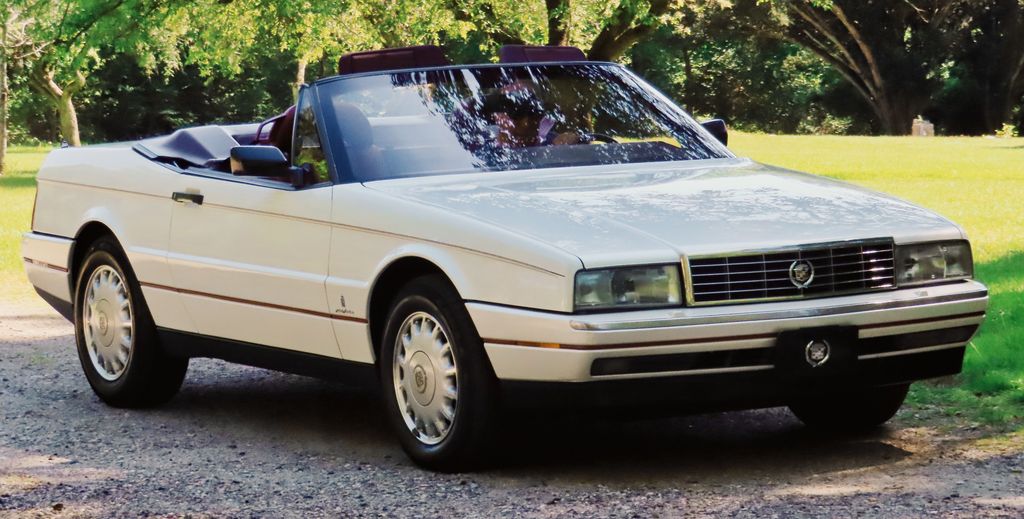
8. **Cadillac Allante**Ah, the Cadillac Allante. This was GM’s grand, ambitious attempt in the late 1980s to go head-to-head with the likes of Mercedes-Benz SL and Jaguar XJS. Imagine a sleek, two-seater convertible with its body designed and built by Pininfarina in Italy, then flown across the Atlantic to be united with its Cadillac chassis in Detroit. This staggering logistical feat showcased Cadillac’s ambition to inject serious European panache into its luxury lineup.
On paper, the Allante promised a harmonious blend of Italian styling and American V8 power, delivering a sophisticated, open-top cruising experience. It was supposed to elevate Cadillac’s image, proving that Detroit could build a world-class luxury roadster. Yet, despite its international pedigree and undeniable curb appeal, the Allante was plagued by a cocktail of problems from the get-go. Its Northstar V8, while powerful, wasn’t always the most reliable in earlier iterations, and the car’s quality control left much to be desired for a premium segment vehicle.
But the real nail in the Allante’s coffin was its astronomical price tag, often hovering around $60,000 to $70,000 in late ’80s money, which was a princely sum at the time. For that kind of cash, buyers could get a proven European competitor with a stronger reputation for engineering and performance. The Allante simply couldn’t justify its cost in the eyes of discerning luxury buyers, leading to low sales figures and a rapid plummet in value once it hit the used car market. Today, it’s an interesting footnote, a car you can grab for a fraction of its original asking price, offering a quirky piece of automotive history for those willing to brave the potential maintenance.
Car Model Information: 1993 Cadillac Allante Coupe
Name: Cadillac Allanté
Manufacturer: Cadillac,General Motors,Pininfarina
Production: 1986–July 16, 1993,21,430 produced
ModelYears: 1987–1993
Successor: Cadillac XLR
Class: Luxury car,Roadster (automobile)
Assembly: Pininfarina#San Giorgio plant,Detroit
Platform: V-body
Layout: Front-engine,_front-wheel-drive_layout#Front-engine_transversely_mounted_.2F_Front-wheel_drive
BodyStyle: convertible
Engine: Cadillac High Technology engine#HT-4100,Cadillac High Technology engine#4.5,Northstar engine series#L37
Transmission: Turbo-Hydramatic 125#Turbo-Hydramatic 440-T4,GM 4T80 transmission#4T80-E
Length: 178.6 in
Abbr: on
Width: 73.5 in
Height: 52.2 in
Weight: 3720 lb
Wheelbase: 99.4 in
Designer: Pininfarina
Categories: 1990s cars, All articles needing additional references, All articles with unsourced statements, Articles needing additional references from February 2018, Articles needing additional references from September 2018
Summary: The Cadillac Allanté is a two-door, two-seater luxury roadster marketed by Cadillac from 1987 until 1993. The Allanté was based on a Cadillac chassis and running gear with a convertible body style with a folding soft top and an available removable hardtop. The bodies were built in Italy by coachbuilder Pininfarina which were flown to Detroit for final assembly. Over 21,000 were built during its seven-year production run.
Get more information about: Cadillac Allanté
Buying a high-performing used car >>>
Brand: Cadillac Model: Allante
Price: $29,875 Mileage: 8,739 mi.
Read more about: The Costly Truth: 14 Classic Cars That Are Simply Not Worth Restoring for the Savvy Enthusiast
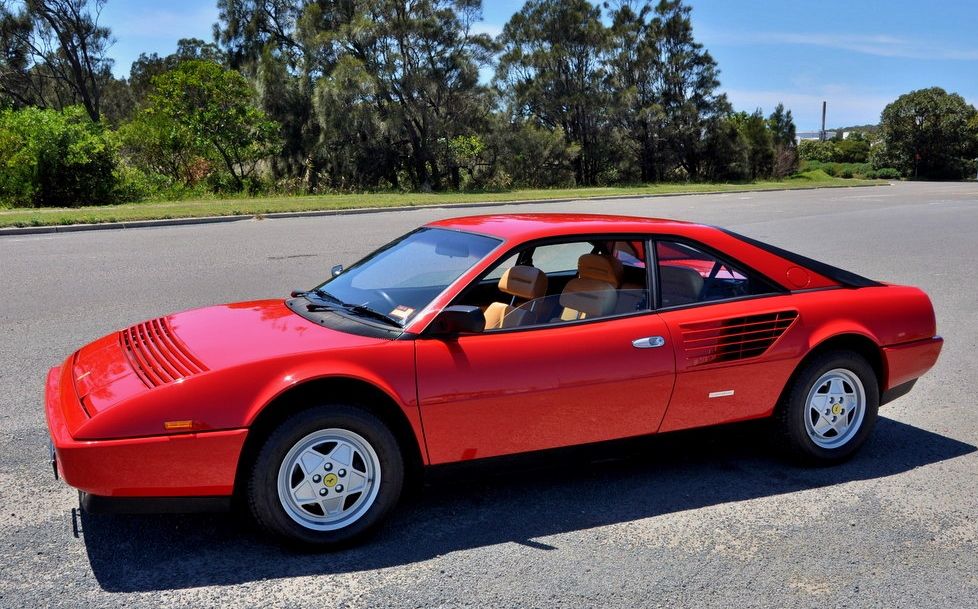
9. **Ferrari Mondial**Now, prepare for some sacrilege, because we’re talking about a Ferrari that most Prancing Horse purists would rather forget: the Mondial. Introduced in 1980, this wasn’t your typical, fire-breathing, two-seater Ferrari built solely for speed and adrenaline. No, the Mondial was a “practical” Ferrari, a four-seater sports car with a more accessible layout and, dare we say it, a slightly softer edge. It was an attempt by the Italian automaker to broaden its appeal, offering a more family-friendly option.
Naturally, this departure from Ferrari’s traditional mid-engine, two-seater sports car philosophy didn’t exactly endear it to the marque’s most ardent fans. Many viewed the Mondial as less “pure,” its design often criticized for being a bit awkward compared to its more celebrated stablemates. It was heavier, not quite as quick, and simply lacked the exotic allure that defined other Ferraris of its era. This perception was a significant blow to its collectibility, as the very qualities that made a Ferrari a Ferrari seemed somewhat diluted in the Mondial.
The Mondial’s reputation was further compounded by the complexities and expense of maintaining any vintage Ferrari, yet without the accompanying stratospheric appreciation of its peers. While a 308 or a Testarossa continued to climb in value, the Mondial languished. Consequently, this has made the Mondial one of the most affordable entry points into the world of Ferrari ownership. If you’ve ever dreamed of parking a Prancing Horse in your garage, the Mondial offers a distinctive, albeit polarizing, classic Ferrari experience, a true testament to how market sentiment can heavily influence a car’s ultimate worth.
Car Model Information: 1989 Ferrari Mondial Cabriolet
Name: Ferrari Mondial
Manufacturer: Ferrari
Production: Mondial 8: 1980–1982,703 produced,Mondial qv: 1983–1985,1,145 (coupé) produced,629 (cabriolet) produced,Mondial 3.2: 1986–1988,987 (coupé) produced,810 (cabriolet) produced,Mondial t: 1988–1993,858 (coupé) produced,1,017 (cabriolet) produced
Assembly: Modena
Designer: Pininfarina,Pierangelo Andreani (1976),Leonardo Fioravanti (engineer)
Class: Grand tourer
BodyStyle: coupé
Related: Ferrari 308 GTB,Ferrari 328,Ferrari 348
Predecessor: Ferrari GT4
Categories: 1990s cars, Articles with short description, CS1 French-language sources (fr), CS1 German-language sources (de), Cars discontinued in 1993
Summary: The Ferrari Mondial (Type F108) is a mid-engined, V8, grand tourer manufactured and marketed by Ferrari between 1980 and 1993 – with styling by Pininfarina and bodywork by Carrozzeria Scaglietti.
Offered as either a 2+2 coupé or cabriolet, the Mondial has the slightly higher roofline, greater dimensions and increased weight to accommodate occasional rear seating for children or small adults.
The Mondial replaced the Ferrari 308/208 GT4 coupé and remains the last V8, rear mid-engined, 2+2 Ferrari.
The name Mondial, French for global, reflected its worldwide conformance with 1980 safety and emission standards — as well as the company’s prominent motor racing victories. Ferrari had used the nameplate in the 1950s to celebrate Formula 1 World Championships and again in the 1970s to mark its Formula 1 World Constructors Championships.
Get more information about: Ferrari Mondial
Buying a high-performing used car >>>
Brand: Ferrari Model: Mondial
Price: $59,998 Mileage: 43,684 mi.
Read more about: Commanding Attention: 13 Most Expensive 1970s Cars That Are Worth a Fortune Today for Enthusiasts and Collectors

10. **Chevrolet Camaro Z28 (Third-Generation)**Moving back to American muscle, let’s talk about the third-generation Chevrolet Camaro Z28, particularly those from the early to mid-1980s. The third-gen’s early 1980s release brought a much-needed update to the iconic muscle car. It looked the part, with a sleek, aerodynamic design distinctly modern for its time, and improved handling promising an engaging driving experience. For a generation growing up in the ’80s, these cars were the epitome of cool, a poster child for American performance.
However, beneath that sharp, angular bodywork, the reality was often a bit… underwhelming, especially for those hoping to relive the glory days of unbridled horsepower. The third-gen Z28 was, unfortunately, a child of its era, grappling with stringent emissions regulations that choked its once-mighty V8 engines. While it offered various V8 options, many variants, especially the 305-cubic-inch V8, were rated at a paltry 190 horsepower, a far cry from its 1960s ancestors.
This significant power deficit, combined with reliability concerns that caused the third-gen to plummet in value shortly after its release, severely hampered its long-term collectibility. These “bad boys,” as some affectionately (or sarcastically) called them, could be picked up for just a few thousand dollars at one point, a stark contrast to the escalating values of first- and second-gen Camaros. So, while it still boasts a cool aesthetic and represents a slice of ’80s Americana, the third-gen Z28 shows how regulatory pressures and a lack of raw grunt can keep even an iconic nameplate from ascending to classic car investment heaven.
Car Model Information: 2022 Nissan Rogue SV
Name: Chevrolet Camaro
Manufacturer: Chevrolet
Production: 1966–2002,2009–2023
ModelYears: 1967–2002,2010–2024
Class: Pony car
BodyStyle: coupe,convertible
Platform: GM F platform,GM Zeta platform,GM Alpha platform
Layout: Front-engine, rear-wheel-drive layout
Categories: 1970s cars, 1980s cars, 1990s cars, 2+2 coupés, 2000s cars
Summary: The Chevrolet Camaro is a mid-size American automobile manufactured by Chevrolet, classified as a pony car. It first went on sale on September 29, 1966, for the 1967 model year and was designed to compete with the Ford Mustang. The Camaro shared its platform and major components with the Firebird, produced by General Motors’ Pontiac division that was also introduced for the 1967 model year.
Four distinct generations of the Camaro were developed before production ended in 2002. The nameplate was revived on a concept car that evolved into the fifth-generation Camaro; production started on March 16, 2009.
Production of the sixth generation of the Camaro ended in December 2023, for the 2024 model year.
Get more information about: Chevrolet Camaro
Buying a high-performing used car >>>
Brand: Chevrolet Model: Camaro Z28
Price: $24,768 Mileage: 33,001 mi.
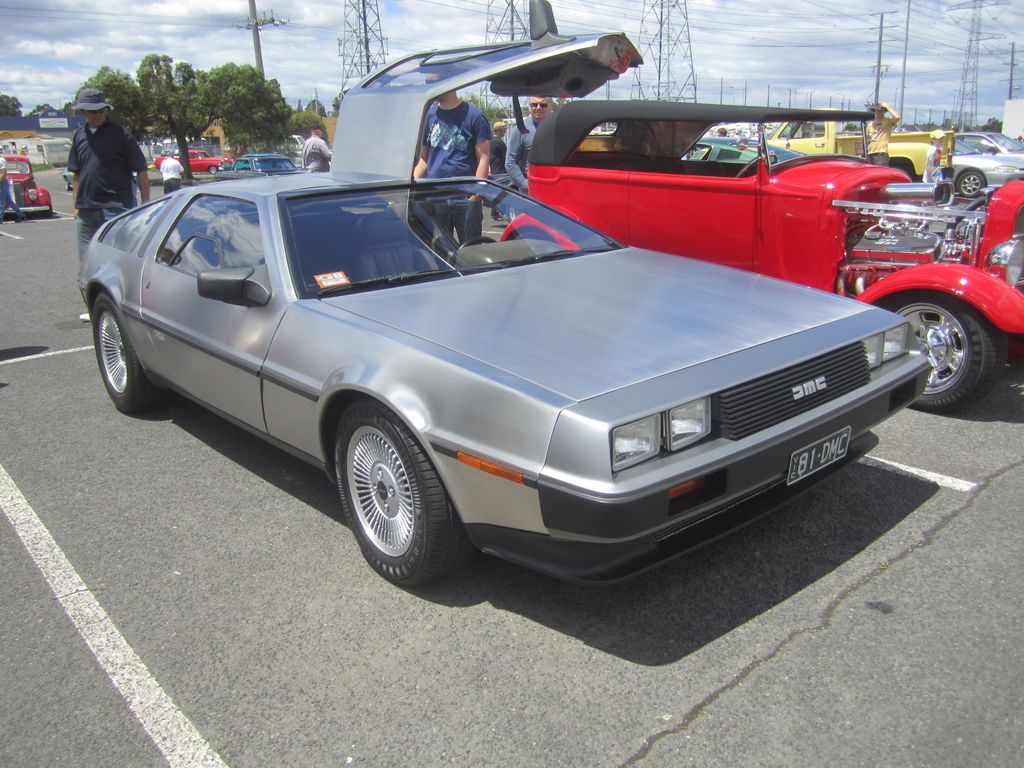
11. **DeLorean DMC-12**No list of depreciated classics would be complete without the legendary, or perhaps infamous, DeLorean DMC-12. This car is an icon, period, thanks almost entirely to its starring role in the “Back to the Future” movies. Introduced in 1981, the DeLorean was envisioned as a futuristic vehicle, instantly recognizable by its gleaming stainless steel body panels and dramatic gull-wing doors. It looked like nothing else on the road, promising a slice of tomorrow, today.
But here’s the cold, hard truth: beneath that revolutionary exterior, the performance of the DeLorean simply did not match its extravagant looks. The vehicle was severely underpowered, its 2.85-liter V6 engine producing a mere 130 horsepower, and critics often lamented its awful handling. It offered visual drama but delivered more whimper than roar on the open road. Owners often grappled with reliability issues and the unique challenges of maintaining that raw, unpainted stainless steel.
Compounding its mechanical shortcomings was a high-profile legal case involving the company’s founder, John DeLorean, which further impacted its already shaky reputation. The dream quickly dissolved into a nightmare of financial woes and unfulfilled promises. As a result, the DeLorean DMC-12 became a symbol of failed automotive ventures and experienced a substantial decline in value in its immediate aftermath. While its cinematic fame ensures it will always be a curiosity, its actual performance and build quality mean it remains more of a novelty display piece than a highly prized driver’s car, certainly not appreciating as one might expect given its celebrity status.
Car Model Information: 1982 Delorean DMC-12
Name: DMC DeLorean
Alt: 1983 DeLorean
Caption: 1983 DeLorean
Manufacturer: DeLorean Motor Company
Production: January 21, 1981 – December 1982
ModelYears: 1981–1983
Assembly: Dunmurry
Designer: Giorgetto Giugiaro
Class: Sports car
BodyStyle: coupé
Layout: Rear-engine, rear-wheel-drive layout
Doors: Gull-wing doors
Engine: 2.85 L
Abbr: on
Powerout: 130 hp
Transmission: 5-speed manual ,3-speed automatic
Wheelbase: 2413 mm
Length: 4267 mm
Width: 1988 mm
Height: 1140 mm
Weight: 1233 kg
Sp: us
Categories: 1980s cars, All Wikipedia articles written in American English, Articles with short description, Automobiles with backbone chassis, Automobiles with gull-wing doors
Summary: The DMC DeLorean is a rear-engine, two-seat sports car manufactured and marketed by John DeLorean’s DeLorean Motor Company (DMC) for the American market from 1981 until 1983—ultimately the only car brought to market by the fledgling company. The DeLorean is sometimes referred to by its internal DMC pre-production designation, DMC-12, although this was not used in sales or marketing materials for the production model.
Designed by Giorgetto Giugiaro, the DeLorean is noted for its gull-wing doors and brushed stainless-steel outer body panels, as well as its lack of power and performance. Though its production was short-lived, the DeLorean became widely known after it was featured as the time machine in the Back to the Future films.
With the first production car completed on January 21, 1981, the design incorporated numerous minor revisions to the hood, wheels and interior before production ended in late December 1982, shortly after DMC filed for bankruptcy and after total production reached an estimated 9,000 units.
Despite the car having a reputation for poor build quality and an unsatisfactory driving experience, the DeLorean continues to have a strong following, driven in part by the popularity of Back to the Future. 6,500 DeLoreans were estimated to still be on the road as of 2015.
Get more information about: DMC DeLorean
Buying a high-performing used car >>>
Brand: DeLorean Model: DMC-12
Price: $129,950 Mileage: 3,145 mi.
Read more about: Don’t Fall for the Hype: The 15 Cars That Look Absolutely Stunning But Drive Terribly
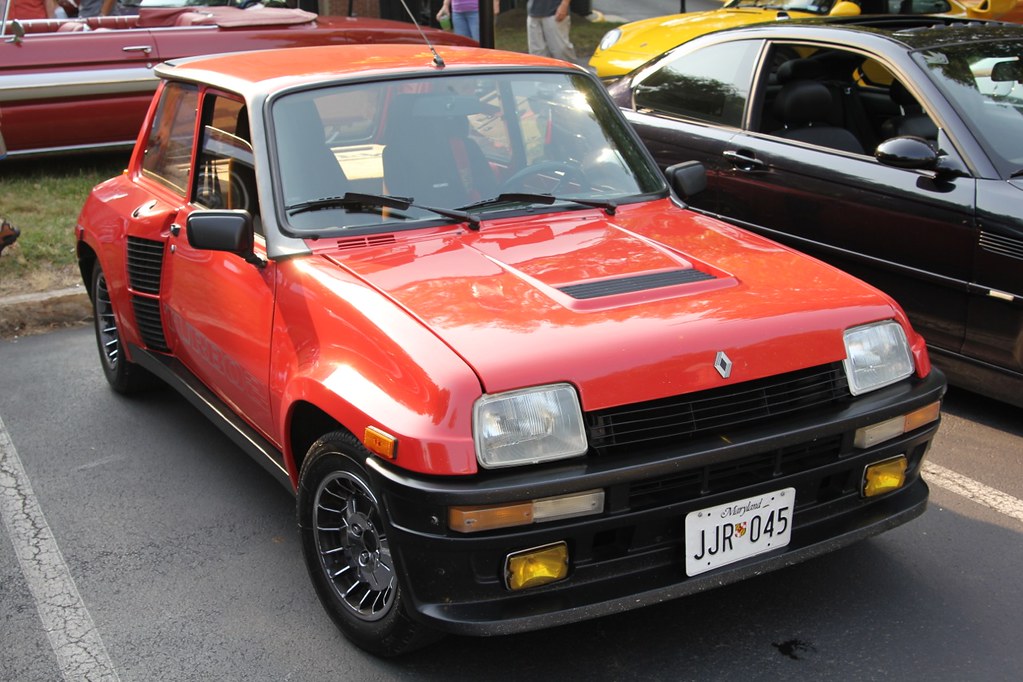
12. **Renault Le Car**Now for something completely different, and a stark reminder that even charming, economical imports can fall victim to market realities. Enter the Renault Le Car, known more widely as the Renault 5 outside the U.S. When it debuted in 1972, this compact hatchback was a breath of fresh air, quickly gaining popularity in Europe for its efficient design, affordability, and undeniable practicality. It was cute, it was frugal, and it promised a sensible, spirited ride.
However, when Renault tried to crack the American market with “Le Car” branding, things took a turn. American owners quickly discovered this cute hatchback suffered from serious reliability issues, particularly when faced with U.S. driving conditions and American consumer demands. Beyond that, a significant lack of parts availability and specialist servicing within the U.S. became a major headache. Imagine trying to keep a niche European import running when your local mechanic has never even seen one.
As a result, this once-promising economy car quickly plummeted in value on this side of the Atlantic and, frankly, hasn’t really recovered since. It just couldn’t compete with the burgeoning Japanese imports that offered similar practicality with far superior reliability and dealer networks. The Le Car is a classic example of a car that just wasn’t suited for every market, and its value reflects that fundamental mismatch. Today, it’s a quirky curiosity, a testament to a bygone era of attempts at European invasion, but certainly not a financial windfall for its owners.
Car Model Information: 2022 Nissan Rogue SV
Name: Renault 5
Caption: Second generation R5
Manufacturer: Renault
Production: 1972–1996
Class: Supermini car
Successor: Renault Clio,Renault Twingo
Categories: 1980s cars, 1990s cars, Articles with French-language sources (fr), Articles with Spanish-language sources (es), Articles with short description
Summary: The Renault 5 is a five-passenger, three or five-door, front-engine, front-wheel drive hatchback supermini manufactured and marketed by the French automaker Renault over two generations: 1972–1985 (also called R5) and 1984–1996 (also called Super 5 or Supercinq).
The R5 was marketed in the United States and Canada as Le Car, from 1976 until 1983. Renault marketed a four-door sedan variant, the Renault 7, manufactured from 1974 until 1984 in Spain by Renault’s subsidiary FASA-Renault and exported to select markets.
The Renault 5 became the best-selling car in France from 1972 until 1986, with a total production exceeding 5.5 million over 14 years, making it France’s most popular car.
Get more information about: Renault 5
Buying a high-performing used car >>>
Brand: Renault Model: Le Car
Price: $24,768 Mileage: 33,001 mi.
Read more about: Beyond the Chrome: Unpacking the Allure of 9 Iconic 1960s Luxury Car Ads That Defined an Era
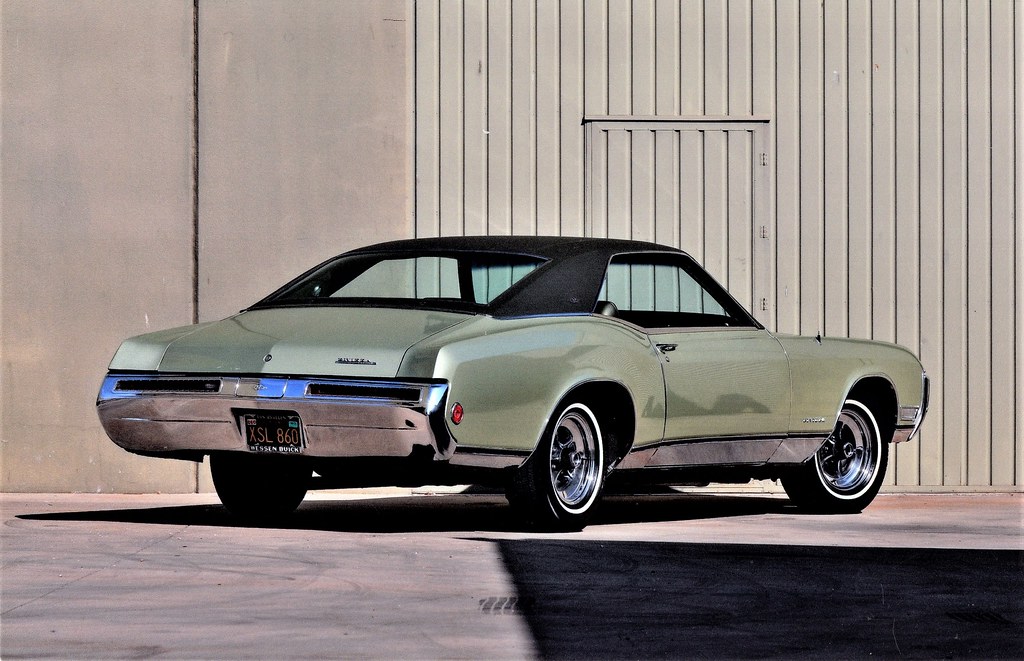
13. **Buick Riviera (Post-Oil Crisis Generations)**When we talk about the Buick Riviera, visions of elegance and power often conjure up the iconic “Boat Tail” models from the early 1970s. These grand, luxurious coupes, Buick’s flagship, embodied a unique blend of American style and performance. They were head-turners, no doubt, and for a brief moment, they represented the pinnacle of opulent personal transportation.
Yet, even with gorgeous looks and rich heritage, the Buick Riviera, particularly its post-oil crisis generations, saw significant depreciation. The market simply vanished for heavy, thirsty luxury coupes, out of step with new realities of fuel economy and evolving consumer tastes. The demand for these types of vehicles, once a symbol of success, evaporated almost overnight as buyers shifted towards more efficient, albeit less flamboyant, options.
Later iterations of the Riviera, while still comfortable and well-appointed, often struggled to define their identity in a rapidly changing automotive landscape. They became less distinctive, blending into a sea of more generically styled personal luxury cars. This dilution of its original, bold design language, coupled with the prevailing economic pressures, meant that while the earlier ‘Boat Tails’ hold some collector interest, the subsequent generations became far less desirable. Today, you can often find these once-proud luxury cruisers for surprisingly little money, making them an accessible, if depreciated, way to own a comfortable slice of American automotive history.
Car Model Information: 1971 Buick Riviera
Caption: 1963 Buick Riviera
Name: Buick Riviera
Predecessor: Buick Super
Manufacturer: Buick
ModelYears: 1963–1993,1995–1999
Class: Personal luxury car
Categories: 1960s cars, 1970s cars, 1980s cars, 1990s cars, All articles with specifically marked weasel-worded phrases
Summary: The Buick Riviera is a personal luxury car that was marketed by Buick from 1963 to 1999, with the exception of the 1994 model year.
As General Motors’ first entry into the personal luxury car market segment, the Riviera was highly praised by automotive journalists upon its high-profile debut. It was a ground-up design on a new GM E platform debuting for the 1963 model year and was also Buick’s first unique Riviera model.
Unlike its subsequent GM E platform stablemates, the Oldsmobile Toronado and Cadillac Eldorado, the Riviera was initially a front engine/rear-wheel drive platform, switching to front-wheel drive starting with the 1979 model year.
While the early models stayed close to their original form, eight subsequent generations varied substantially in size and styling. A total of 1,127,261 Rivieras were produced.
The Riviera name was resurrected for two concept cars that were displayed at auto shows in 2007 and in 2013.
Get more information about: Buick Riviera
Buying a high-performing used car >>>
Brand: Buick Model: Riviera
Price: $22,499 Mileage: 91,150 mi.
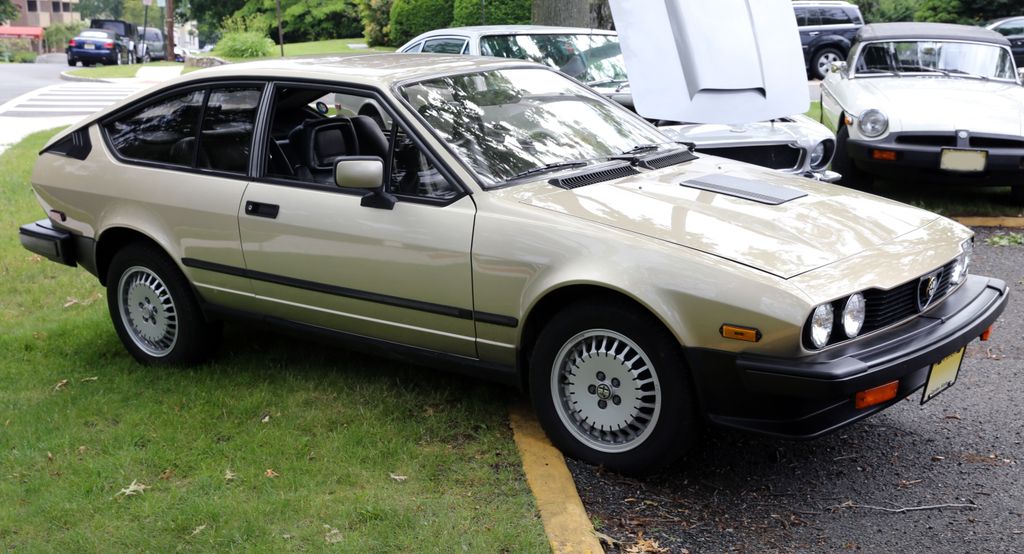
14. **Alfa Romeo GTV6**Finally, let’s turn our attention to the stunning Alfa Romeo GTV6, a car that, like many Alfas, could make even the most stoic gearhead swoon with its looks and sound. Released in 1980, this sports coupe was a true driver’s car, boasting a rear-wheel-drive layout, excellent balance thanks to its transaxle design, and that gloriously sonorous V6 engine. It was an accessible Italian exotic, promising an engaging, raw driving experience that very few cars of its era could match.
Finally, let’s turn our attention to the stunning Alfa Romeo GTV6, a car that, like many Alfas, could make even the most stoic gearhead swoon with its looks and sound. Released in 1980, this sports coupe was a true driver’s car, boasting a rear-wheel-drive layout, excellent balance thanks to its transaxle design, and that gloriously sonorous V6 engine. It was an accessible Italian exotic, promising an engaging, raw driving experience that very few cars of its era could match.
Predictably, this reputation for mechanical fragility and expensive upkeep quickly led to a decline in value shortly after its discontinuation in the late 1980s. While a well-preserved unit is still a thing of beauty and a joy to pilot, its market value has never truly soared into the stratosphere of other ’80s sports cars. Today, a clean GTV6 can often be picked up for a fraction of its original MSRP, making it a surprisingly affordable entry into classic Italian motoring, provided you’re prepared for the “Alfa tax” in maintenance. It’s a gorgeous, engaging car, but one whose value reminds us that passion often comes with a price, and sometimes that price is paid in depreciation.
Car Model Information: 2022 Nissan Rogue SV
Name: Alfa Romeo Alfetta
Caption: 1978 Alfa Romeo Alfetta GTV 2.0
Manufacturer: Alfa Romeo
Production: 1972–1987
Assembly: Arese,Rosslyn, Gauteng
BodyStyle: Sedan (automobile)
Layout: Front-engine, rear-wheel-drive layout
Related: Alfa Romeo Giulietta (116),Alfa Romeo Alfa 6,Alfa Romeo 90
Categories: 1980s cars, Alfa Romeo vehicles, Articles with short description, CS1 Dutch-language sources (nl), CS1 French-language sources (fr)
Summary: The Alfa Romeo Alfetta (Type 116) is a front-engine, five-passenger saloon and fastback coupé manufactured and marketed by Italian automaker Alfa Romeo from 1972 to 1987 with a total of over 400,000 units produced during its production run.
The Alfetta was noted for the rear position of its transaxle (clutch and transmission) and its De Dion tube rear suspension — an arrangement designed to optimize handling by balancing front/rear weight distribution, as well as maintaining a low polar moment of inertia and low center of gravity. The interior of Coupé models featured a then unusual central tachometer placement — by itself, directly in front of the driver.
The Alfetta name, which means “little Alfa” in Italian is derived from the nickname of the Alfa Romeo Alfetta (Tipo 159), a successful Formula One car which in its last iteration introduced in 1951, paired a transaxle layout to De Dion tube rear suspension — like its modern namesake.
Get more information about: Alfa Romeo Alfetta
Buying a high-performing used car >>>
Brand: Alfa Romeo Model: GTV6
Price: $24,768 Mileage: 33,001 mi.
Read more about: Drivers Beware: 12 Car Brands Plagued by Constant Repairs & Steep Maintenance Bills
So there you have it, folks – another deep dive into the fascinating, sometimes heartbreaking, world of classic car values. It’s a realm where nostalgia battles practicality, and iconic status doesn’t always guarantee a bulging bank account. While the market for truly rare and historically significant models will likely continue to thrive, these cautionary tales serve as a potent reminder: sometimes, a classic car is just a car, a beautiful machine to be enjoyed for its own sake, not necessarily as a golden ticket to financial glory. So, next time you’re browsing those auction listings, remember to temper your heart’s desires with a healthy dose of market reality. Happy motoring, and may your future classics be kinder to your wallet than some of these have been!

